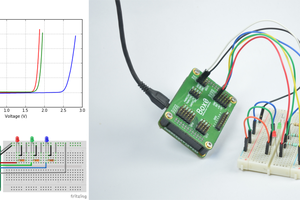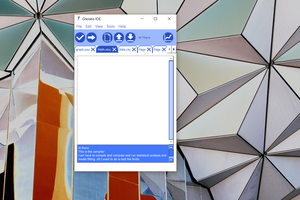This paper details the design and construction of a simple data acquisition and plotting system for amateur or commercial use. The system uses a general purpose computer, a standardized USB-powered peripheral board, and small software application to measure, record, and plot a real time signal. The system is demonstrated in use with a biochemistry chromatography experiment; however, the system may be used in conjunction with any experiment which needs to measure and plot an electrical signal. Modifications to the hardware are discussed to adapt the circuit to various signal voltages. Total cost is about US $35 in parts, a few hours connecting common electronic components with a soldering iron, and a few hours entering software on any typical computer. This system does require a separate computer which supports USB, although a small, inexpensive, embedded computer may be substituted instead, such as the popular Raspberry Pi board (currently, US $25). In contrast, a commercial-grade chart recorder which performs the same functions might have a price tag of US $2,000. Building this basic data acquisition system also yields the understanding of how to design and use such systems, either for use in laboratory protocols, or in field experiments.
Simple Data Acquisition and Plotting for Wetware
My O'Reilly Biocoder article, A Simple Data Acquisition and Plotting System for Low Cost Experimentation.
 Jonathan Cline IEEE
Jonathan Cline IEEE
 Kuldeep Singh Dhaka
Kuldeep Singh Dhaka
 DARK-labs
DARK-labs
 Al Williams
Al Williams
 Simon Tsaoussis
Simon Tsaoussis